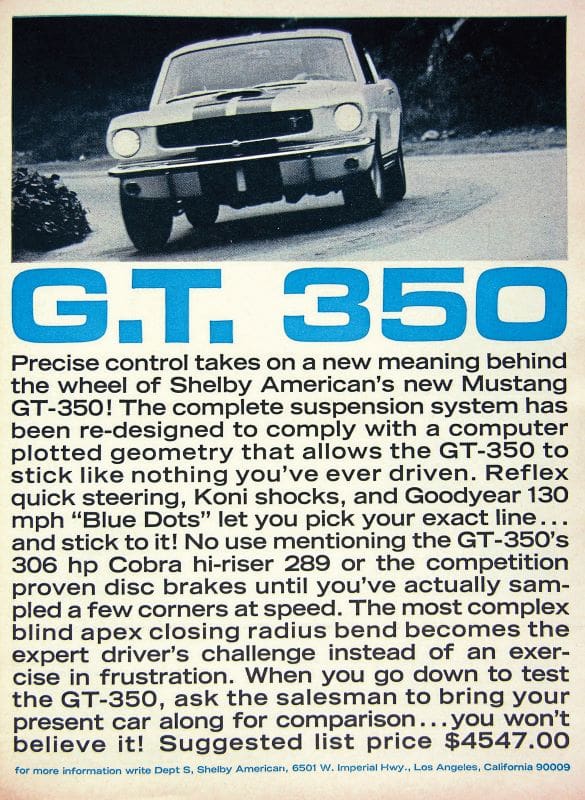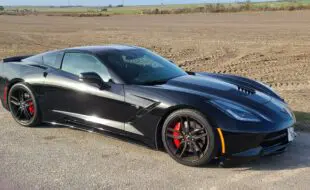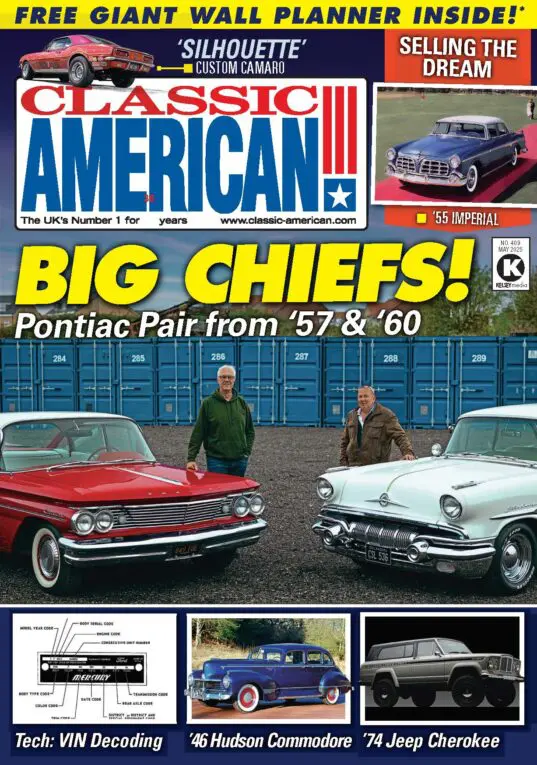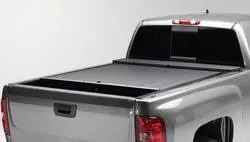Carroll Shelby’s magic was worked on the Ford Mustang in 1965 to create the race-ready Shelby GT 350, a car that literally could be ordered from Ford dealers and driven straight to the race track. James Maxwell recounts the extraordinary story and looks at a continuation version that arguably offers a modern take on this Shelby Mustang legend…
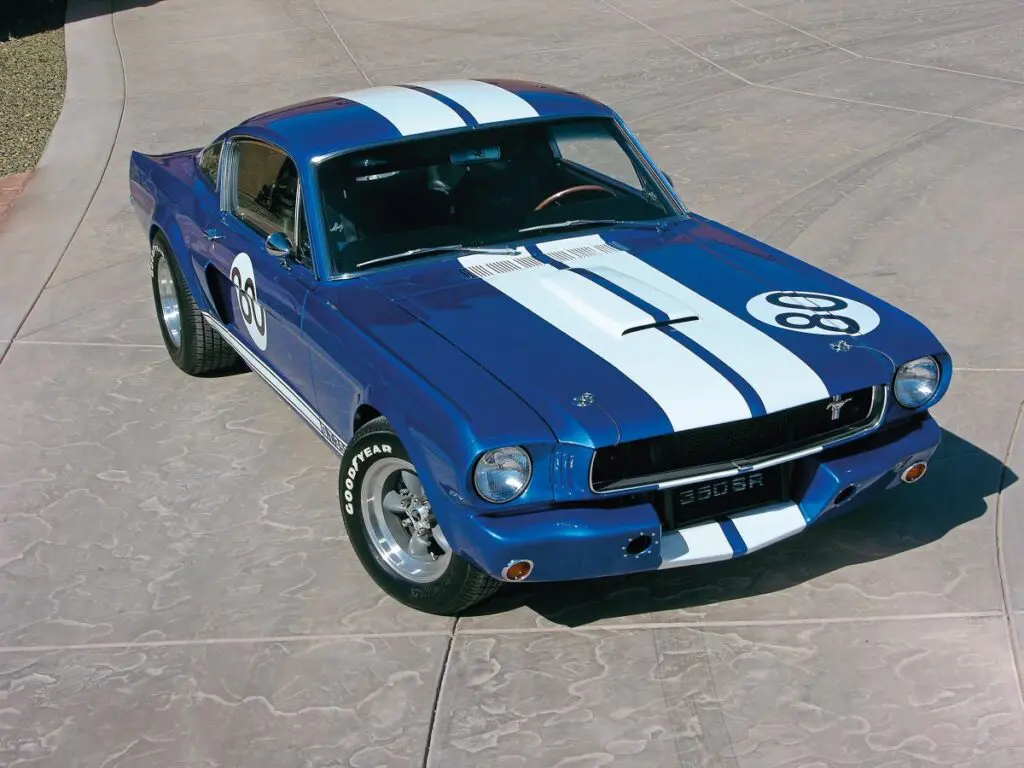
Words and photography: James Maxwell
“The minute you get in, turn the key, and get into gear, you know you’re in a living, fire-breathing machine, and it’s beyond doubt one of the most exciting and easiest driving cars that I ever handled,” stated Carroll Shelby in his 1965 book The Cobra Story. He was referring to the Shelby Mustang GT 350, not the standard version but the racing version. “It’s almost unbelievable, but we can take a GT 350 around any circuit where we test it faster than the best Corvettes in full racing trim! You just can’t very well accept that fact, I know, until you drive the car.”
Enjoy more Classic American reading in the monthly magazine.
Click here to subscribe & save.
Lee Iacocca is credited with asking Carroll Shelby the question of what it would take to race the Mustang. And the reply was: build 100 of them! That was how the birth of the GT 350 Shelby Mustang took place. To recap the history of the Shelby Mustang GT 350 the word ‘homologated’ must enter into the picture. Homologated means accepted, being granted approval by an official authority. The SCCA (Sports Car Club of America) was the premier auto racing series and ran America’s National Championship programme, with its international governing body for its racing rules coming from the FIA (Federation Internationale de l’Automobile) organisation.
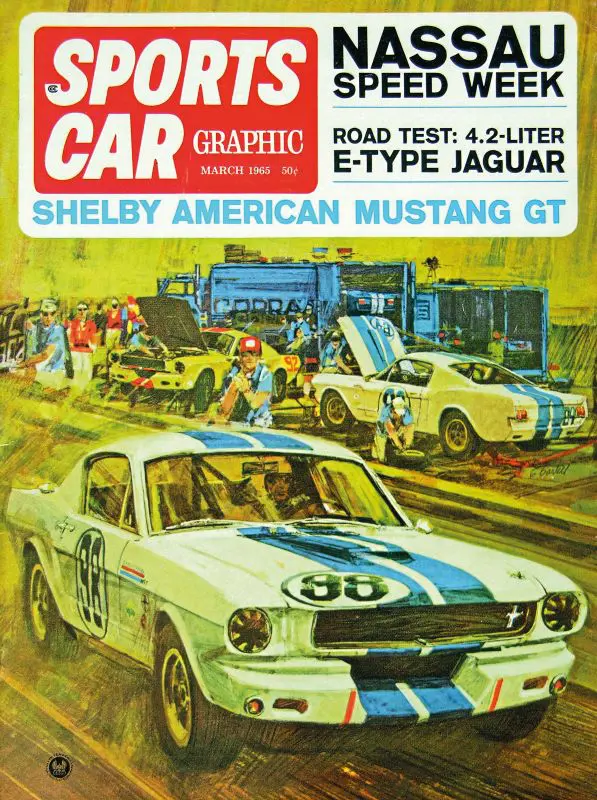
The FIA said that in order for the Mustang to compete in the Production Sports Car B Class, it needed to be a sports car. To qualify as being a sports car, it required being a two-seater, so the standard Mustang ‘2+2’ rear seat got the axe. Also, the FIA said a minimum of 100 cars were required and they had to be equipped with ‘normal road touring equipment’ as well. And the deadline was January 1, 1965. Shelby was plenty busy racing and selling his Cobras, plus spearheading the GT 40 racing programme at the time, but Dearborn wanted racing Mustangs and FoMoCo paid the bills, so time was made to do it. Soon big transport trucks were on their way from Ford’s assembly plant in San Jose to Shelby’s facility on Princeton Drive in Venice.
These trucks were loaded with Mustang fastbacks and they came stripped down, without rear seats and hoods. Undercoating and body insulation was not included; the standard grille emblem was deleted, as were the rocker panel chrome strips. The cars were painted Wimbledon White, featured black interiors and came with full-size rear ends (nine-inch ring gear), complete with larger than standard rear drum brakes. Borg-Warner T10-M four-speed transmissions were used and they came with aluminium cases and tail shaft housings.
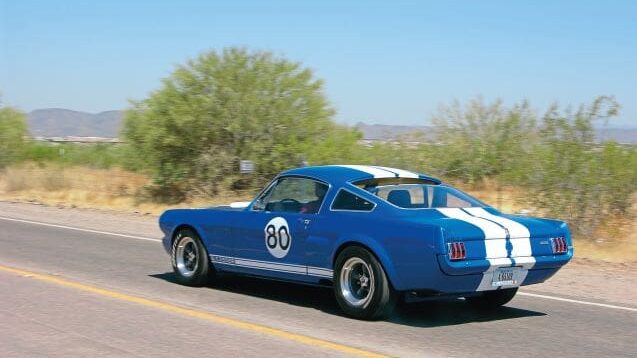
The Mustangs were modified at the Shelby facility, all under the direction of ace chassis set-up man Ken Miles, and the work was much more involved than what first met the eye. The front suspension was reworked and upgraded, with the upper control arms being remounted for better geometry (providing built-in understeer), which was designed to keep the tyres firmly planted on the ground during heavy cornering.
Those arms were dropped one inch in position, which changed the roll centre and modified the camber (the lower arms were also moved outboard) and in the end the pivot points were moved to provide superior high-speed handling, albeit with some visible negative camber. Steering changes included longer pitman and idler arms, which were swapped out to give a 19:1 steering ratio (3.5 turns lock-to-lock), which translated to a 14% quicker steering ratio. Additional changes to the front included the fitting of a mammoth one-inch diameter front stabiliser and the installation of Koni adjustable shock absorbers. Kelsey-Hayes 11.3-inch disc brakes (with DS-11 pads) were added for increased stopping power.
The rear of these Mustangs received lots of attention too, with the installation of a NoSpin Detroit Locker differential, torque-control bars (located on the top and forward side of the leaf springs) with their mounting location (pivot point) directly above the eye of the spring, for optimum geometry. The placement of these bars were located inside the passenger’s compartment where the rear seat used to be, so holes in the floorboards needed to be added, and they had to be large enough to allow for suspension movement. Special cables were installed that wrapped around the axle to limit suspension travel, as were rubber lips around the slotted clearance holes for the torque arms, along with glass fibre coverings to keep the exhaust fumes from entering the cockpit. Koni adjustable shocks were also used out back and the brakes saw the addition of larger (2.5-inch) metallic shoes for additional sure-footed braking power.
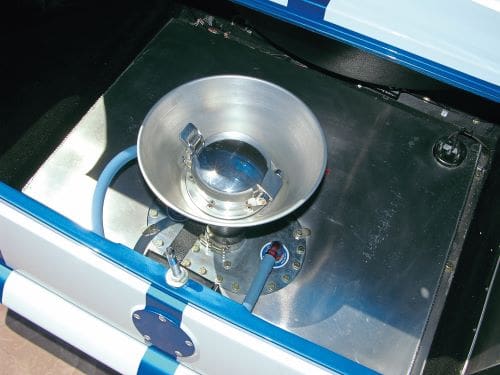
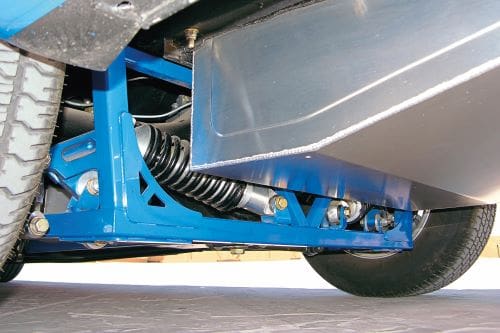
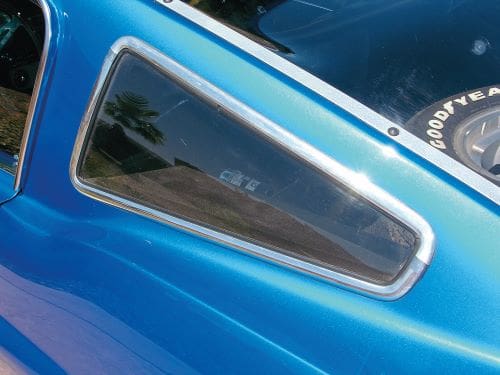
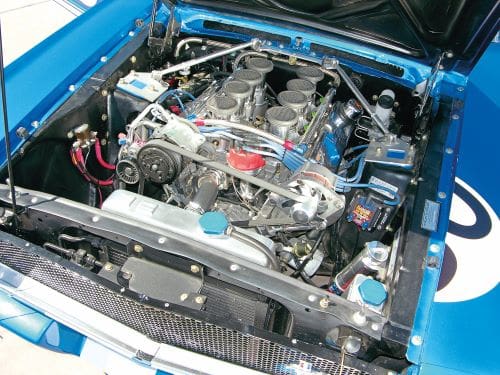
The engines for GT 350 vehicles started out as K-Code 271-horsepower high-performance small blocks (289cu in) that used 10.5:1 compression pistons, a solid lifter camshaft and dual point distributor. Shelby added some extra power by using simple bolt-on speed equipment, including an aluminium hi-rise intake manifold, Holley 715-cfm (cubic feet per minute) four barrel carburettor and Tri-Y tubular exhaust headers.
A free-flowing exhaust system was used (with glass pack mufflers) and early cars had the pipes exit in front of the rear wheels. The carburettor was a centre-pivot design model, which was used to help prevent fuel sloshing on hard cornering. The standard stamped steel oil sump was upgraded with a six-quart finned cast aluminium oil pan with internal baffling. This pan adds extra oil capacity and aids in oil cooling. With these simple but effective mods, power went up to 306bhp.
Additional underhood modifications included the fitting of an ‘export’ brace (for added chassis rigidity) and a so-called Monte Carlo bar; triangulating the underhood shock absorber towers. A pair of cast aluminium Cobra rocker covers and a chrome open element air cleaner were also added to the package. The battery and mounting bracket were removed and relocated to the trunk. The car weighed 2800lb and had a 53/47 front-to-rear weight bias. Tyres were 7.75 x 15 Goodyear Blue Dot Specials (semi-competition) and they were tested safe for sustained speeds up to 130mph and featured low-angle nylon cords. CS 15-inch aluminium wheels were available, with a price of $273, and looked much racier than the 5.5-inch wide steel wheels that came standard. Glass fibre hoods with functional scoops were installed and the grille received a single (driver’s side) emblem. All cars came with blue side stripes and GT 350 markings on the lower portion of the front fenders, and the large (10-inch wide) Le Mans racing stripes running stem to stern on the top side were optional.
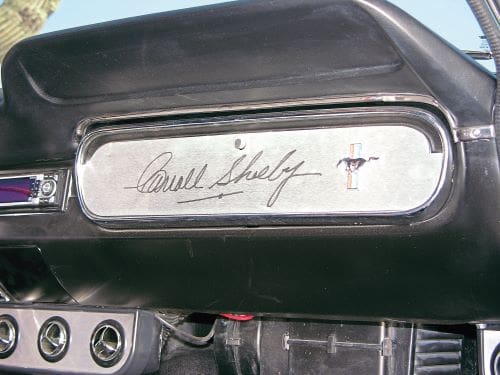
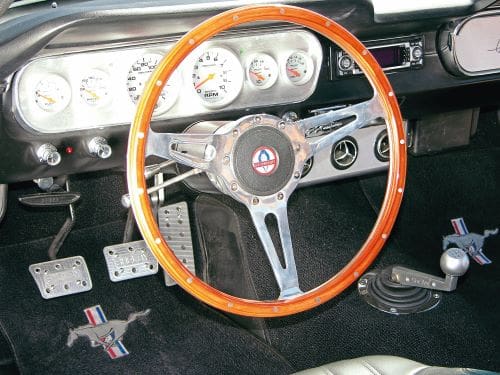
Inside, a new three-spoked, aluminium-framed wood-rimmed steering wheel was added and because there was no horn provision on it, a toggle switch located on the dash was used to sound the horn. A supplemental gauge cluster was added to the centre portion of the dash, housing a 6500rpm redline tachometer and oil pressure gauge. Seat belts were very business-like three-inch wide affairs and were of an Air Force type design. The rear seat area had a glass fibre parcel shelf overlay and that’s where the spare tyre (laid out horizontally) was located.
Legend has it the car was dubbed GT 350 from a discussion at Shelby American while trying to come up with a name for the Cobra-ised Mustang. Carroll Shelby is said to have asked employee Phil Remington to pace off the distance to see how many feet it was from the office to the workshop building. He told him it was about 350 feet. So, the car was officially named right then and there the GT 350. No matter how it was named, 350 sounded good and soon it appeared on every one built. Only designated Ford dealers were able to offer Shelby Mustang GT 350s, and the price started at $4547. Competition R models had all the above, plus a heavy-duty Galaxie A/C radiator, auxiliary oil cooler, glass fibre front apron (complete with flexible ducting that was positioned to feed cool air towards the brakes), Plexiglas side windows to replace the standard side grilles (which weighed some 14lb each), and Plexiglas rear window. The front and rear bumpers were removed, as was the car’s headliner, carpeting and upholstery.
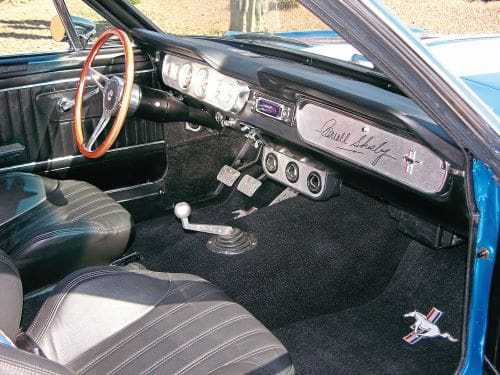
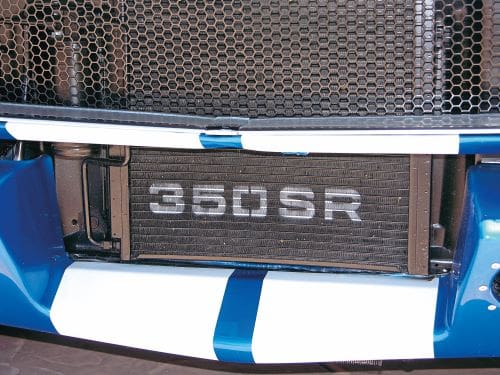
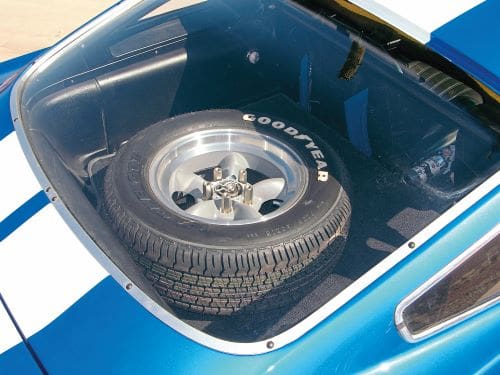
The new rear window was unique, as it not only was lightweight, but also featured an air-gap opening of two inches at the top, which allowed air to escape from the interior, and was said to slightly reduce drag and turbulence at the rear of the car. A single lightweight racing seat replaced the standard buckets and aluminium panels replaced the original Ford door panels, and the standard roll-up mechanisms and side glass was discarded and replaced with pull-up Plexiglas pieces.
A shoulder harness, roll bar and fire extinguisher was included (known as the Interior Safety Group) and a complete assortment of gauges (tach, fuel pressure, water temp, oil pressure and oil temperature) was used.
R-spec versions received balanced and blueprinted (hand-built) engines that were given a more radical camshaft, ported heads and big steel oil pans. An air velocity stack (with air-tight seal) was fitted between the carburettor and hood, and this engine was rated at 350 horsepower.
The racer version cars also had their stock Mustang fuel tanks replaced with 34-gallon quick-fill units, along with a 3½-inch quick-release filler cap. An electric fuel pump (two in some early cars) was also added. There were body modifications to both the front and rear fenders, and to the inner fenders as well, plus the rear brakes were also vented with air via piping that ran forward of the side exhausts. For $5995 a buyer could drive off with a fully tuned GT 350R and head for the nearest track!
Records indicate there were 562 standard Shelby Mustang GT 350s built in 1965, and just 37 examples of the ‘R’ racer version built. This was indeed a special time for lovers of high-performance Mustangs. On January 25, 1965, at a special press gathering that was assembled prior to the USRRC race at the Riverside International Raceway in Southern California, Ford introduced the Shelby-ised Mustang GT 350 and the basic idea was this: race on Sunday, sell on Monday. Ford offered the public a car that could be raced, already modified by Shelby American.
How did the GT 350 Shelby Mustangs do on the racetracks? The first event the car competed at was in Green Valley, Texas with Ken Miles behind the wheel and it won its first race. Following that, the cars were getting into the hands of other talented drivers and here were the results: Bob Johnson got a first place in Bp at Cumberland, Jerry Titus won overall at Kent, Tom Yeager won first place at Elkhart Lakes, Bob Johnson scored another first place at Mid-Ohio, Lime Rock saw the GT 350s come in first, second, third and fourth (Johnson, Donahue, Krinner and Owens) and Chuck Cantwell walked away with first place at Willow Springs. The car was successful right out of the gate!
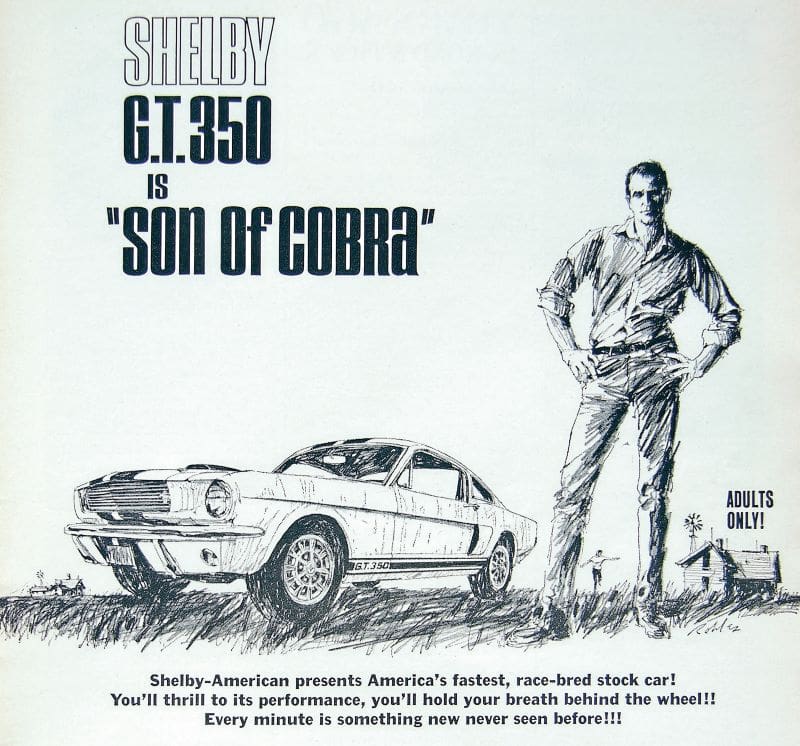
The pictured Blue Mustang GT 350 SR is a Carroll Shelby authorised ‘continuation’ car and was built by Unique Performance in Farmers Branch, Texas. This firm rescues vintage Mustangs for transformation into modernised, 21st century performers with the best engine, suspension, brake and comfort components on the market, while sporting the classic good looks of the original Sixties Shelby. “The line of authentic Shelby cars has just grown dramatically, which allows us to offer a vehicle for every taste including the big block and small block Cobra, Series 1 and GT500E,” said Carroll Shelby when these were released to the public. “Our continuation Shelbys will have spectacular performance, timeless good looks and cutting-edge technology. I guarantee these cars will have the right stuff to stomp the competition.”
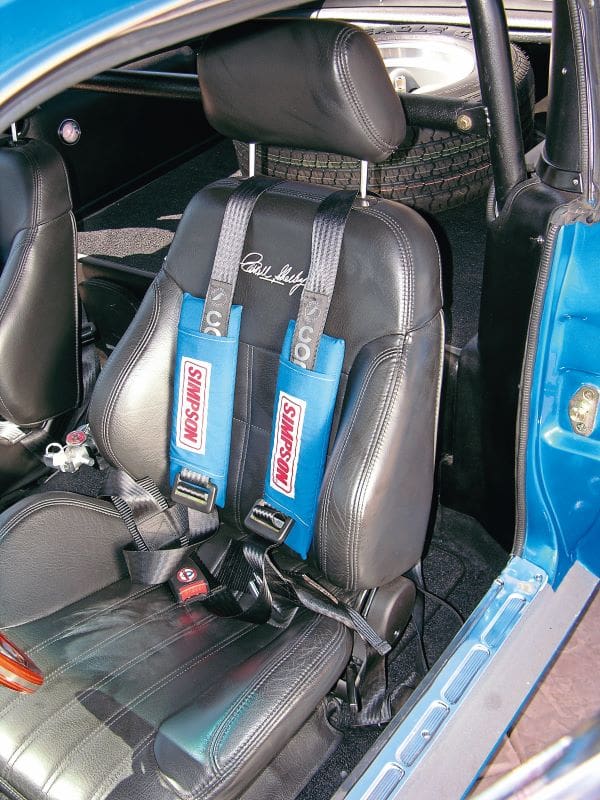
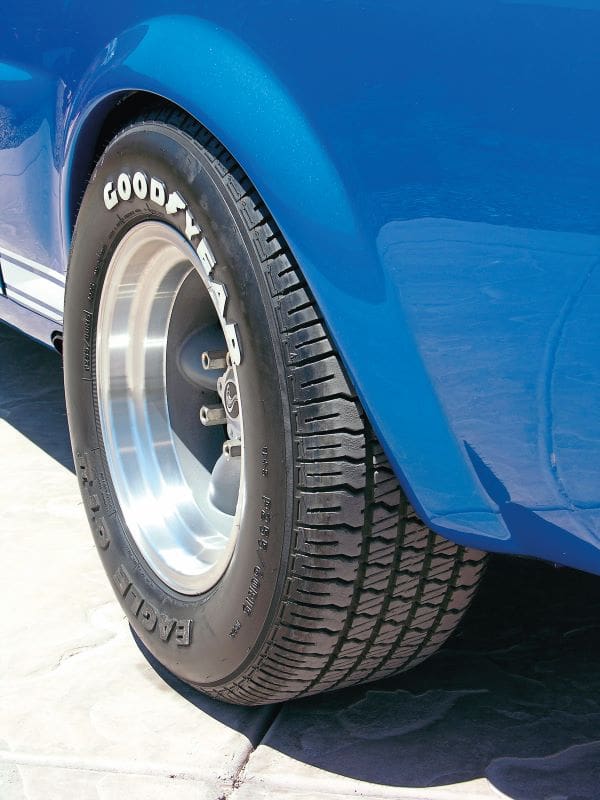
This particular car features a 408cu in Shelby-tuned small block (with DC&C Electronic Fuel Injection and MSD Ignition upgrades) with 475 horsepower. A Tremec five-speed manual and front and rear coil-over suspension is part of the package, as are Baer 12-inch discs (slotted, cross-drilled and slotted), which are on all four corners. Included in the brake system is an adjustable rear bias proportioning valve. Power rack and pinion steering and tubular control arms also provide modern underpinnings to an already legendary platform. A Sony AM/FM stereo and Hurricane A/C system was added as optional equipment and inside things are a tad more comfortable with the addition of leather Shelby Signature high back buckets.
The SR either stands for Street Racer or Shelby Racer depending on what day you ask the folks at Unique Performance, and the question always asked is if the car is ‘real’, with the answer being, yes, it’s a real Mustang!
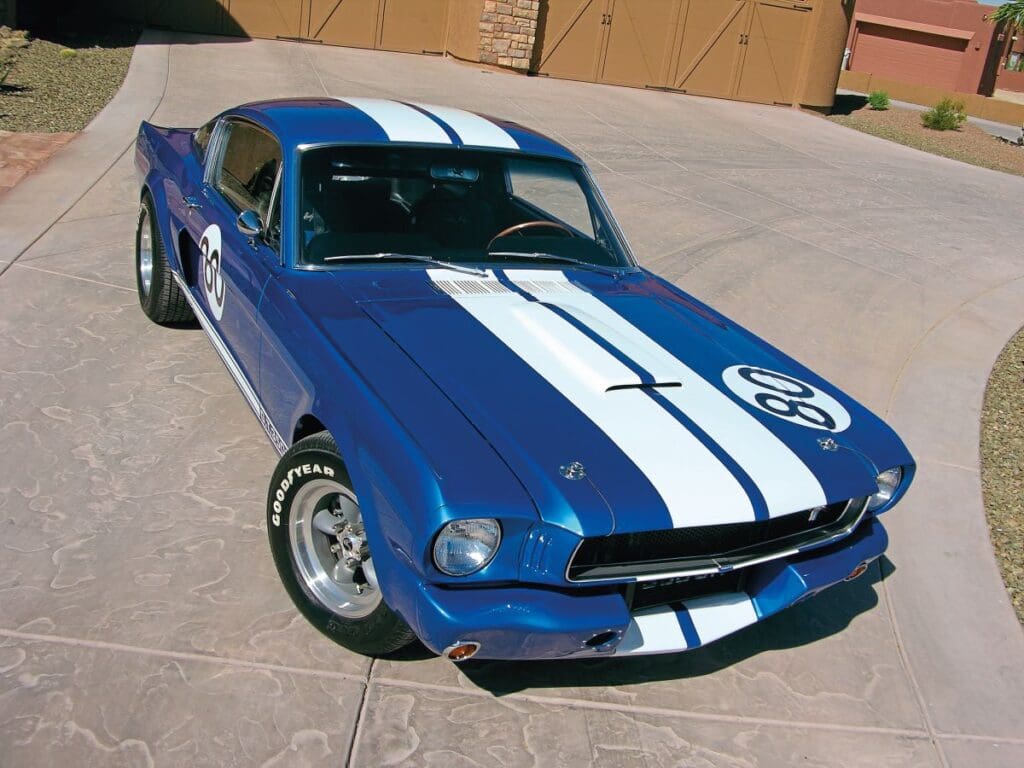
The continuation circumstances are unique as Carroll Shelby himself was involved from the word go and each SR gets its own Shelby VIN and is registered as a GT 350 SR which also ensures authenticity.
This car was the very first to roll out of the Texas assembly plant and with #1 markings it’s an instant collector’s item simply based on that! Fargo, North Dakota car lover Bill Wiemann owns this potent pony and when he gets behind the wheel, it’s just like all those famous drivers that won all the races back on the circuit in the mid-Sixties, only this time around the car has a few built-in creature comforts!
